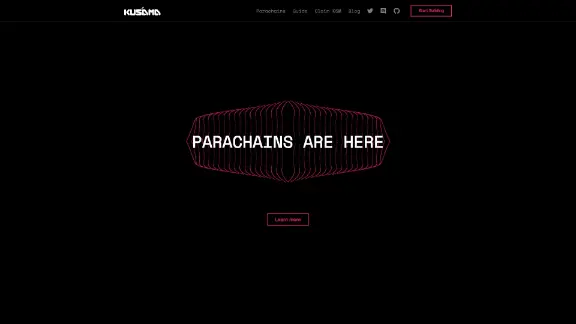Kusama (KSM)
Kusama is a multi-chain network designed to facilitate early-stage deployment and experimentation for projects within the Polkadot ecosystem. Developed by Parity Technologies using the Substrate blockchain framework, Kusama mirrors the Polkadot codebase while offering a more flexible environment for testing and iteration.
Overview

| Ticker | KSM |
| Category | Smart Contract Platform |
| Website | https://kusama.network/ |
| @kusamanetwork |
Kusama serves as a testing ground for blockchain developers, providing a platform with lower entry barriers for deploying parachains and reduced bond requirements for validators. The network operates on a heterogeneously-sharded, multichain architecture utilizing a nominated proof-of-stake (NPoS) consensus system. This approach allows for energy-efficient operations and supports on-chain upgrades without the need for forks. Kusama also facilitates cross-chain communication through its cross-chain message passing (XCMP) protocol, enabling interaction between various parachains.
The governance model of Kusama is decentralized and permissionless, allowing token holders to participate in decision-making processes. It features a quicker governance process compared to Polkadot, with a combined voting and enactment period of 15 days, making it suitable for projects requiring rapid development cycles.
History
Kusama was introduced in 2019 by Parity Technologies, the creators of Polkadot, under the guidance of Dr. Gavin Wood, a co-founder of Ethereum. It was established as a "canary network," offering a real-world environment for testing new features and upgrades before their implementation on Polkadot. The Web3 Foundation has played a significant role in Kusama’s development by providing grants and resources for research and community initiatives.
Tokenomics
The native token of Kusama, KSM, was initially distributed through an airdrop to participants in the Polkadot (DOT) token sale on a 1:1 basis and was also available through a frictional faucet, which has since been discontinued. Unlike Polkadot, Kusama has not undergone redenomination, maintaining a stable circulating supply. KSM tokens are used for governance, staking, and rewarding validators. The economic model supports early-stage projects with low transaction fees and a flexible framework, allowing for cost-effective deployment and testing. Validator rewards are distributed in KSM tokens, and the network's inflation rate is managed to maintain a balanced token supply.
Funding
Kusama's growth has been supported by funding from the Web3 Foundation and other blockchain-focused organizations. These funds have been used to advance research, foster community development, and enhance technical capabilities. The Kusama Treasury also plays a crucial role in financing innovative projects within the ecosystem, providing resources for initiatives that contribute to the network’s ongoing development.
